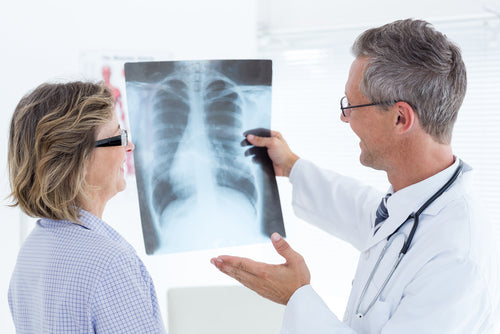
In the next 15 years, adults aged 65 and older are projected to outnumber children under age 18 in the U.S. for the first time in its history.1 With this graying of the population, a complete understanding of the effects of aging on the body is more important than ever.
Take the respiratory system, for example. The lungs mature by the time an adult reaches the age of 20-25, and after the age of 35 lung function begins to progressively decline due to a combination of structural, physiological, and immunological changes.2
These changes don’t tend to cause serious problems like airway obstruction or lung disease in healthy older people because they have some reserve lung capacity. But when an elderly person already has respiratory disorders caused by previous infections or smoking, that reserve shrinks and problems can arise more easily.3
Aging lungs are affected by changes in the structure of the lungs, chest wall, and respiratory muscles like the diaphragm.4 The strength of the respiratory muscles decreases with age, which can make it difficult for an older adult to cough effectively and keep their airway clear. Also, age-related thoracic spine deformities can impair respiratory function.2
During aging, the alveoli in the lung can lose their shape and become baggy, resulting in a decline in lung elasticity. This is accompanied by a loss of alveolar gas exchange surface area and a reduction in the number of capillaries for each alveolus, which is the way oxygen gets into the bloodstream. Other structural changes inside the lung end up trapping gas as the airways close during exhalation, causing an increase in residual volume at the expense of lung capacity.5
Other age-induced changes in respiratory function include abnormalities in ventilation and gas exchange. Increased physiological dead space inside the lungs and an imbalance between ventilation and perfusion can reduce blood oxygen levels and increase the alveolar-arterial oxygen difference. While blood carbon dioxide concentration does not increase with aging, responses to a shortage of oxygen or an excess of carbon dioxide in the blood are reduced.3
Exercise capacity of the lungs also decreases with age, in part because age-related muscle atrophy can cause a decrease in diaphragm strength of more than 20%. Also, maximum oxygen consumption falls by more than 1% per year.3
As the population has aged in the developed world, deaths caused by lung disease have increased. For instance, chronic obstructive pulmonary disease (COPD) is now the fourth leading cause of death worldwide and the No. 3 killer in the U.S.6
It is now understood that aging is a key factor in many chronic lung diseases, with most showing up mainly in the elderly or as more severe in older people. Far more people aged 65-74 have COPD in the U.S. than do people between the ages of 25 and 44, and aging has been found to increase the mortality resulting from COPD.6
As the lungs age, the size of the alveolar space increases, which can bring on a condition known as “senile emphysema.” This increase is brought on without any inflammation or alveolar wall destruction.4 A loss in the supporting structure of the lung can also cause the kind of dilation of air spaces characteristic of senile emphysema.2
The elderly are more susceptible to viral and bacterial pneumonia, and the cases tend to be more severe. Older individuals are also at higher risk for developing acute respiratory distress syndrome (ARDS) as a result of this susceptibility.6
As the aging process progresses, the risk for venous thromboembolism rises, as does the chance of contracting a non-tuberculosis mycobacterial infection.6 Venous thromboembolism can result in pulmonary embolism, a blood clot that can stop the flow of blood to the lungs and cause death.7
Growing research has shown a high incidence and severity of asthma associated with airway remodeling in elderly patients.6 Asthma in the elderly tends to have higher morbidity and mortality than asthma in younger patients, in part due to lack of diagnosis and treatment.8 Also, some studies indicate aging lungs are less likely to respond to respiratory medications because of functional changes in the airway receptors.2
You can protect and maintain your lung function by not smoking and avoiding both indoor and outdoor air pollutants. Secondhand smoke, chemicals, and outdoor air pollution can damage the lungs and cause or worsen lung disease.
Diet and exercise are also important in maintaining a healthy respiratory system. Excess abdominal fat can make it hard for the diaphragm to fully inflate the lungs, and lack of exercise can lead to weakened chest muscles. It’s also important not to lie down for too long, since it allows mucus and fluid to settle in the lungs, restricting their capacity.
Regular medical checkups are key to helping keep the entire body in good working order, and they are key to catching any respiratory disease before it becomes serious. Make sure to get an annual flu shot and ask your healthcare practitioner if you should be vaccinated for pneumonia.9
References